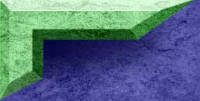Titration of an Acid with a Base
II. Objectives:
1. Lear how to use burets to measure accurate quantities.
2. Learn how to recognize the equilibrium point.
3. Be able to understand the procedure well enough to standardize a solution.
4. Find molarity of the given base.
III. Procedure
1. Set up the apparatus to hold 2 burets. Label one HCl, and the other one NaOH. Also label two beakers, one NaOH and one HCl, and place 80 mL of each solution on the appropriate beaker.
2. Pour 5 mL of NaOH solution from the beaker into the basic buret. Rinse the walls with the solution and let it go into another beaker and discard it.
3. Fill the buret after rinsing above zero mark.
4. Repeat steps 2 and 3 with the HCl.
5. Trial 1: Write down the starting readings for each buret to the nearest.01.
6. Take 10 mL of NaOH to the Elmeyer beaker. Add some water to increase volume. Add a couple of drops of phenolphthalein as an indicator.
7. Slowly add HCl to the beaker and from buret to start titration. Stop frequently and wash the inside surface using your washing bottle.
8. When the pink color begins to disappear add the acid drop by drop until the color completely disappears.
9. Add NaOH drop by drop until the pink color returns, add HCl again until the color disappears. Go back and forth until only one drop makes a difference. Record the final readings to nearest .01
10. Discard liquid in flask, rinse it with DI water and do second and third trial.
11. Record the concentration of the HCl solution in the data table.
IV. Data
Table 1: Buret Readings
|
|
HCl |
NaOH |
|
Trial |
Initial |
Final |
Initial |
Final |
|
1 |
1.9 |
11.6 |
2.46 |
15.5 |
|
2 |
11.6 |
22.1 |
15.5 |
17.0 |
|
3 |
22.1 |
34.4 |
17.0 |
27.0 |
V. Calculations
- Volumes of acid used in the three trials.
- Trial 1: 11.6-1.9= 9.7
- Trial 2: 22.1-11.6= 10.5
- Trial 3: 34.4-22.1= 12.3
- Volumes of base used in the three trials
- Trial 1: 15.5-2.6= 12.9
- Trial 2: 17.0-15.5= 1.5
- Trial 3: 27.0 17.0= 10.0
- Moles of acid used in each trial
Moles= (molarity) (volume) |
Example:
Moles= (5M) (.005L)
Moles= .025
1. Trial 1: 5.8 x 10 -4
2. Trial 2: 4.69 x 10 -4
3. Trial 3: 5.49 x 10 -4
4. 1HCl + 1NaOH® 1NaCl + 1H2O
5. Moles of NaOH
Example: .044molex 1mole NaOH/ 1mole HCl= .44
1. Trial 1: 4.3 x10-4
2. Trial 2: 4.69 x 10 -4
3. Trial 3: 5.49 x 10 -4
6. Molarity of Base
Example: 4.3 x 10 -4 mol NaOH/ .01204= .04M
· Trial 1: .45
· Trial 2: .45
· Trial 3: .45
7. Average .45
8. Percent error
Actual-Theoretical
Theoretical |
Example:
.45-.60 x 100 = 25%
.60
25 % error
VI. Conclusions
- The addition of the water is not supposed to affect the molarity because it didnt have any effects on the titration since it was just additional H20. Adding distilled water only affected the volume of the solution, which didnt matter because it wasnt being measured from the beaker, it was measured from the burets.
- It changed colors from base to neutral, which was an important characteristic because the main objective of the lab was to find the molarity of a base. The experiment couldnt have been done without the phenolphthalein because it was what determined the equilibrium point and it was the signal to record the volume readings. Phenolphthaleins end point relates to the equivalence point because its end point shows the equilibrium point between the acid and the base.
- One source of error couldve been that even though one drop makes a difference in the change of colors, the drops were very large and couldve carried way more solution than the necessary to make a difference. Another source of error can be the DI water, it may not have been fully ionized and the more water added to the solution to add volume, the less the concentration, this makes sense because the results ended up being lower than expected.
- To minimize the source of error the droplets shouldve been smaller and there shouldve been a closer inspection of the color change. Also there is no need to add distilled water if it only serves to add volume. The droplets were falling directly into the solution leaving nothing on the walls and eliminating the need to wash the walls.
- The equilibrium point can be detected by the immediate and complete change of color of the elmeyers buret. The molarity of the NaOH was .45 moles per Liter.

